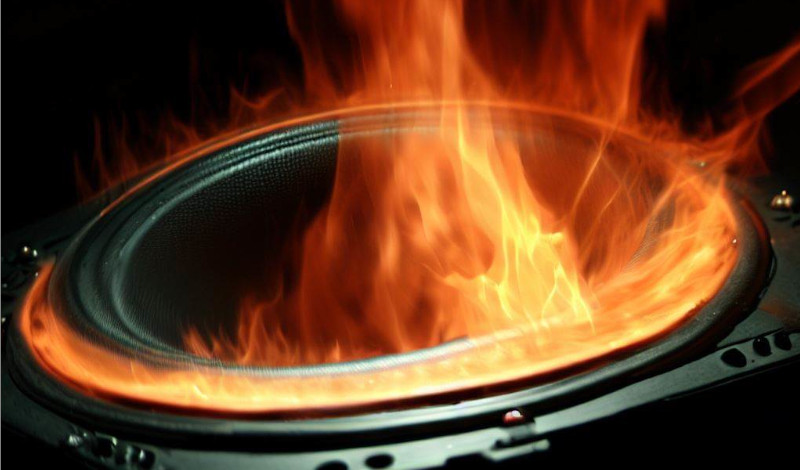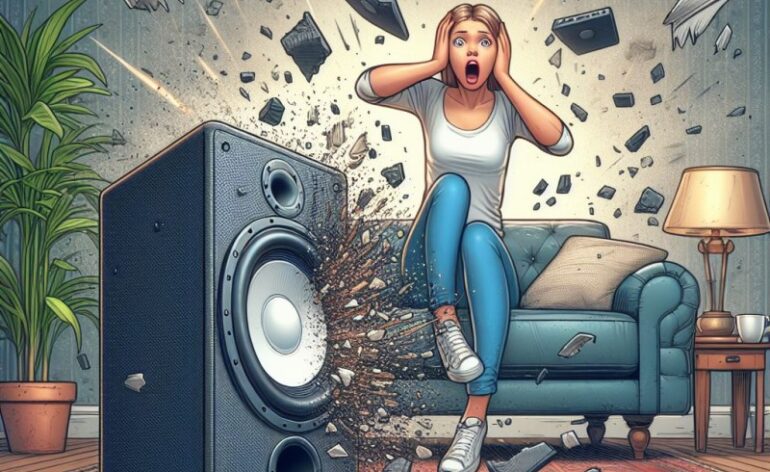Do I Need to Worry about Blowing My New Subwoofer?
You’ve taken the plunge and bought your first “real” subwoofer. You’re so excited! But you are also nervous. This home theater game is a little new to you and you don’t want to mess anything up. People talk online about blowing speakers and subwoofers all the time. Most of the time it seems to be in jest, but you are not sure. Should this be a concern? Do you need to worry about blowing your new subwoofer? How can you protect it? Let’s discuss!
Non-DIY Subwoofers
Generally speaking, all non-DIY (Do It Yourself) subwoofers have protection mechanisms in place in order to keep them from “blowing.” When we say that a subwoofer is “blown,” what people usually mean is that it has been played so loudly that something breaks. That could be something mechanical with the driver or something electronic inside the amp. Either way, it no longer works.

Manufacturers sure don’t want to pay for replacement parts or subs if they can help it. To prevent this, they will add protection mechanisms to keep their subwoofers safe. These can include limits to output, driver excursion, power draw, and more. No matter how they do it, they normally include at least basic protections for their products.
So I Can Turn it Up to 11?
I’m going to say “No” here but the answer usually is yes. No matter what you do to most mass-manufactured subwoofers, you won’t be able to damage them. Even turning them up to the maximum and sending them the highest volume from your receiver won’t matter. Their internal protections will keep them from damaging themselves. You might have to replace a fuse, but you are unlikely to cause permanent damage.

Where Did You Get It?
I specifically said “mass-manufactured” for a reason. If you buy some no-name brand that was built in someone’s garage or a knock-off brand from a foreign website, then all bets are off. Who knows how well that thing was built?
Quality of Subwoofer
We started this conversation by specifying that you bought your first “real” subwoofer. Many speaker manufacturers will offer subwoofers that, honestly, don’t play that low. We’d call them bass modules. You can also find very small “subwoofers” on places like Amazon for very little money. Most “real” subwoofers start at around $500 MSRP. If you’ve bought a subwoofer that retails for less than that, I’d be careful. Cheap subwoofers aren’t really meant to be played very loud or placed in anything other than a very small room.

These budget subwoofers are, by definition, cheap. They’ll make some noise, but you can’t expect the same level of performance as a real subwoofer. On top of that, they won’t have any of the protections that other, more capable, subwoofers would sport. This means you could very well blow your new subwoofer by playing it too loud.
Take Away
It’s great that you want to take care of your new subwoofer. We totally get that. If you’ve bought a quality subwoofer, you’ve done most of the work. The next step will be to run your room correction so that your subwoofer is properly calibrated. You’ll also want to refrain from jacking up the volume just because you are outside or in a different part of the house and still want to hear your music. However, you are more likely to damage your speakers than your sub. So, no, you probably don’t need to worry about blowing your new subwoofer.


